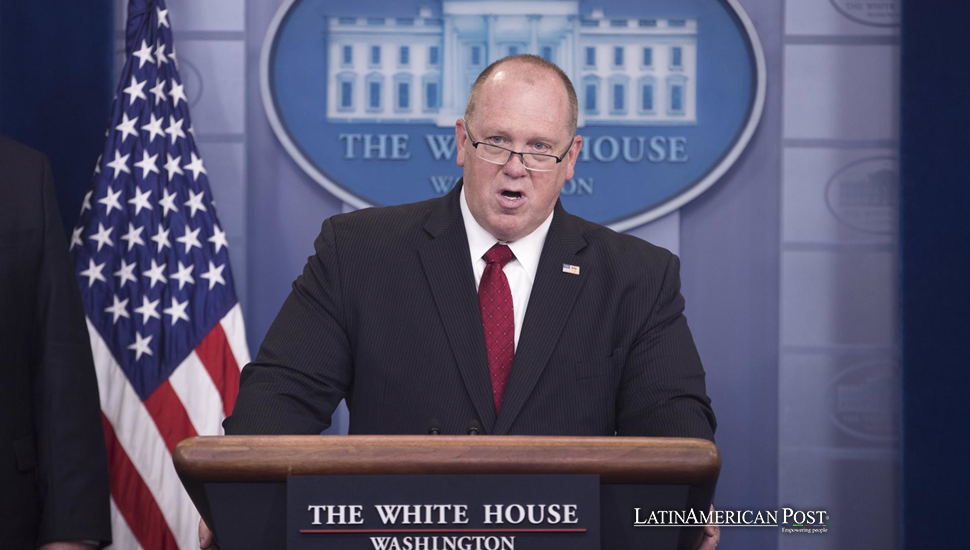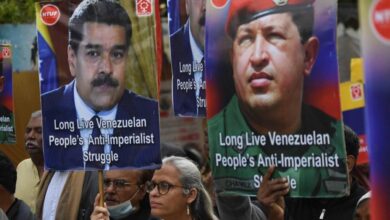Tom Homan’s Hardline Approach and Immigration Effects in Latin America

Tom Homan, with his many years of immigration enforcement experience, takes the reins under Trump and aims to tighten U.S. borders. His tough stance, discussed on CBS News’s 60 Minutes, signals to Latin American families and economies that there may be challenges ahead.
Policies Set to Change Lives and Choices
Tom Homan, known for his no-nonsense approach to border security, is stepping back into the spotlight as he assumes control of U.S. immigration policy. When asked by 60 Minutes how he’d handle border security, Homan was clear: he’s bringing changes that could hit undocumented families hard. Reversing a policy that previously targeted only high-risk individuals for deportation, he is now creating a harsher criminal system that may not differentiate between those who have committed crimes and those who have not. This change could lead to the removal of long-term residents from their communities, individuals who have spent years in the U.S., built families, worked, and established their lives.
This isn’t just a policy shift; it holds personal significance for Latin America. People will lose their primary earners, support networks, and cherished lives. Families and children may be forced to return to countries they haven’t visited in years or, in some cases, have never lived in. There’s also a stark reality for the countries receiving these deported individuals—they may struggle to provide opportunities or integrate families coming back from the U.S., leading to economic strain and, often, dashed hopes. The personal stories of these families, their struggles, and their resilience in the face of such upheaval truly bring the impact of Homan’s policies to life.
The Economic Strain of Targeted Worksite Raids
One of Homan’s notable strategies involves targeting workplaces for immigration enforcement—a tactic he views as essential for enforcing U.S. laws. These “worksite enforcement operations,” as he terms them, are nothing new to Latin American communities in the U.S., which have experienced the fear and upheaval that follow when federal agents arrive at job sites. In past years, factory floors, fields, and warehouses have been places of opportunity and risk as immigrants seek jobs to support their families and send money home.
Latin American economies often rely on these remittances, especially in rural or impoverished areas. When workers are detained or deported, the financial flow stops, and the communities they support back home feel the impact almost instantly. Family members often face difficult choices, such as pulling their children from school to help make ends meet. For many, this economic stress will be increasingly volatile and challenging to recover from. These financial strains are a crucial aspect of the immigration debate that should not be overlooked.
A Controversial History with Family Separations
Most Latin Americans remember Homan’s involvement in Trump’s ‘zero tolerance’ policy, which resulted in the separation of thousands of children from their parents. It was a heartbreaking period, during which images of children in detention centers shocked the world. Homan now proposes that families should be deported together. While this policy change would prevent separation, it still places families in an uncertain and precarious situation.
While this may sound like an improvement, the reality is far from simple. Children born in the U.S. may need to learn the language or the culture of their parent’s home countries. Reintegrating these families would pose an enormous challenge for nations already dealing with issues of poverty, limited resources, and educational gaps. For families being deported, this policy change might prevent separation but still places them on uncertain ground, with children who must adapt to entirely new lives.
A Divided Perspective
While most Latinos have a good idea of the problems that came out of Tom Homan’s policies, it’s worth recognizing an uncomfortable truth: many Latinos and Hispanics in the United States also endorse more tightening of immigration policies. Trump won Latinos as candidates because of his emphasis on law and order, economic growth, and tighter border controls.
This divide highlights an often-overlooked aspect of the immigration debate. The demand for stricter policies stems from Latin American immigrants who arrived legally and want the system to function effectively, as they did when earning their status. Meanwhile, others are concerned about unregulated migration due to fears of economic competition and increased demand for resources in areas that lack sufficient jobs or social services.
For many Latinos, supporting Trump’s policies may seem contradictory, but it reflects their unique experiences and priorities. Thousands of immigrants have worked hard to enter the United States through a complicated and costly process. To them, it feels unfair when others do not seem to follow the same rules, which diminishes their sacrifices.
At the same time, Latin American countries face the repercussions of stricter U.S. immigration measures. Deporting thousands of people can strain local economies, burden social services, and add to government woes with poverty, crime, and inequality. These countries are more likely to rely on deterrence alone rather than on cooperative measures to deal with the structural causes of migration—violence, corruption, and opportunity.
This paradox partly explains why some Latinos support strict immigration laws, even though they recognize the burdens these laws impose on Latin America. It highlights the challenges of creating an immigration system that upholds the rule of law while addressing humanitarian and economic issues at all borders. If Tom Homan is elected, this division among Latinos could influence political decisions and the interpretation of immigration enforcement in Washington and across the Americas. Immigration is a complex issue, and the central question revolves around whether it should be managed in a way that considers all of these factors, which is at the core of the immigration debate.
More Than Policies—The Ripple Effect Across Latin America
Homan’s policies will impact families, workers, and the broader relationship between the U.S. and Latin America. Homan supports Project 2025, which calls for increased funding for border wall construction and higher fees for immigration services. These policies are likely to create diplomatic tensions.
Latin American countries, particularly Mexico and Central America have long faced the challenges posed by the migration crisis. Nations such as El Salvador, Guatemala, and Honduras are already stretched thin, with limited resources to support returning migrants. As U.S. border policies tighten, there may be increasing pressure on Latin American governments to negotiate or even push back against these measures, which could strain diplomatic relations. Now more than ever, these countries seek solutions beyond simply deterring migration; they are looking for approaches that address the root causes of migration and create genuine opportunities for their citizens.
Also read: Learning Cannot Justify Minor Sexualization in Latin Music Lyrics
Ultimately, Homan’s policies are not just about a wall or deportation quotas. They’re about people—parents, children, workers, and communities. For Latin America, these changes are set to touch lives in authentic ways, with families and economies navigating the emotional and financial impacts of yet another shift in U.S. immigration policy.





